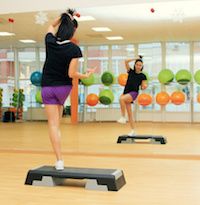Article
The Case for Adding Muscle-Strengthening Exercise for Women with Fibromyalgia
Author(s):
Physical therapy and exercise regimens have been found by many studies to be beneficial to patients with fibromyalgia. But what types of exercise are appropriate for patients who experience persistent, widespread pain, and who may be suffering sleep disturbance, joint stiffness, and many other interrelated symptoms?

Physical therapy and exercise regimens have been found by many studies to be beneficial to patients with fibromyalgia (FM). But what types of exercise are appropriate for patients who experience persistent, widespread pain, and who may be suffering sleep disturbance, joint stiffness, and many other interrelated symptoms?
A recent article in Arthritis Research and Therapy found that progressive resistance exercise can improve muscle strength, health status, and current pain intensity when assessed immediately after the intervention. The trial involved 130 women with FM (age 22—64 years, symptom duration 0–35 years) in an assessor–blinded, randomized, controlled multi–center trial examining the effects of progressive resistance group exercise compared with an active control group. The intervention was performed twice a week for 15 weeks and was supervised by experienced physiotherapists. Another key aspect of the study was that the resistance exercise program was tailored to the individual needs of the patient.
The study revealed significant improvements for isometric knee—extension force (p=0.010), health status (p=0.038), current pain intensity (p=0.033), 6MWT (p=0.003), isometric elbow flexion force (p=0.02), pain disability (p=0.005), and pain acceptance (p=0.043) in the resistance exercise group (n=56) when compared to the control group (n=49).
The findings are important, because muscle strength in women with FM has been reported to be reduced by an average of 39% compared to healthy women. Lack of muscle strength for pain patients can be both the chicken and the egg. FM patients with low muscle strength are more likely to experience pain, and patients experiencing pain are less likely to do exercises that promote muscle strength.
The study authors note that, “Although muscle deconditioning is known to increase the susceptibility to microtrauma related to mechanical strain during physical activities…few studies have evaluated the effects of resistance exercise designed to improve muscle strength in FM.” The few studies that have been conducted show promising results from muscle strength exercises.
Follow-up at 13-18 months showed no significant improvement beyond pain acceptance. “This implies that the participants had difficulties with maintaining regular resistance exercise without supervision,” the study authors note. This mirrors earlier studies, and shows that a longer period of guidance and support might increase the chances of longer-term impacts of muscle-strengthening exercises. But even without significant improvements in muscle strength at long-term follow-up, the improvement in acceptance of pain is a positive. Previous studies have shown that pain acceptance is associated with less disability and better functioning in patients with chronic pain.


